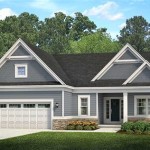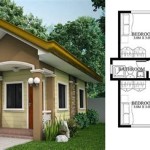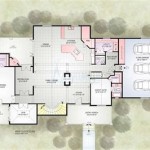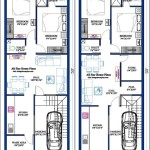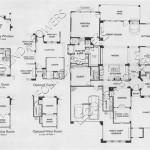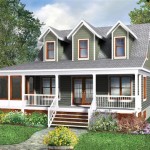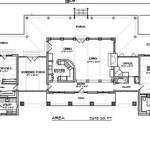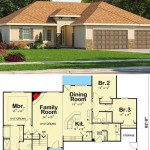Mission Style Homes Floor Plans: A Historical Perspective and Design Considerations
Mission Style architecture, a prominent design movement in the late 19th and early 20th centuries, emerged as a response to the ornate excesses of the Victorian era. It drew inspiration from the Spanish missions built by Franciscan friars in California during the 18th and 19th centuries, emphasizing simplicity, functionality, and a connection to the natural landscape. Understanding the historical context of Mission Style architecture is crucial for appreciating the unique characteristics of its floor plans and how they reflect the lifestyle and values of the period.
The architectural style became increasingly popular in the United States, particularly in California and the Southwest, thanks to the Arts and Crafts movement. Key figures like Gustav Stickley and Bernard Maybeck championed the style, promoting its handcrafted aesthetic and honest construction. This led to a proliferation of Mission Style homes, ranging from modest bungalows to grand estates, each adapting the original design principles to meet the needs of individual families and geographic locations.
Mission Style homes, particularly those designed with meticulous attention to detail, offer a unique blend of historical charm and modern livability. The success of implementing a Mission Style floor plan relies on understanding the core principles of the architecture and adapting them to contemporary needs. These principles include an emphasis on natural light, durable materials, and a strong connection between indoor and outdoor spaces.
Key Features of Mission Style Floor Plans
Mission Style floor plans typically feature an open and airy layout that emphasizes functionality and a connection to the outdoors. The arrangement of rooms, the use of materials, and the integration of architectural details all contribute to the overall aesthetic and create a living space that is both comfortable and visually appealing. Several key features distinguish Mission Style floor plans from other architectural styles, which can be incorporated into modern designs.
One of the major characteristics of Mission Style architecture is the focus on simplicity and functionality. Floor plans typically eschew elaborate ornamentation in favor of clean lines and practical spaces. Rooms are often interconnected, promoting a sense of flow and openness. This arrangement encourages social interaction and makes effective use of available space, reflecting the values of practicality and community that were central to the Mission Style movement.
Many Mission Style homes were built in climates with warm summers and mild winters, so floor plans often prioritized natural ventilation and sun protection. Deep eaves, covered porches, and strategically placed windows and doors helped to regulate indoor temperature and create comfortable living spaces. In modern adaptations, these features can be enhanced with energy-efficient materials and technologies to further improve energy performance.
Furthermore, a strong connection to the outdoors is a hallmark of Mission Style architecture. Floor plans often incorporate courtyards, patios, or verandas that extend the living space into the surrounding landscape. These outdoor areas provide spaces for relaxation, entertainment, and interaction with nature, blurring the boundaries between indoors and out. Large windows and doors are strategically placed to maximize views and allow natural light to flood the interior, further enhancing the connection to the environment.
Common Room Arrangements and Design Elements
Typical room arrangements in Mission Style homes include a central living area that serves as the heart of the house, with bedrooms and other functional spaces branching off from this central hub. The kitchen is often integrated into the living area, reflecting the importance of family and communal dining. Bathrooms are generally simple and functional, with a focus on practical design. The incorporation of specific design elements contributes to the overall feeling.
Open floor plans that seamlessly connect living, dining, and kitchen areas are a common feature. The integration reinforces communication and fosters a sense of togetherness. In some variations, the spaces might be defined by architectural details such as archways, columns, or changes in flooring, but the overall flow and visual connection between the rooms are preserved. The openness contributes to natural ventilation and promotes the feeling of spaciousness.
Fireplaces are frequently a focal point in Mission Style living rooms, often constructed from stone or brick and featuring simple, geometric designs. The fireplace symbolizes hearth and home, providing warmth and ambiance while serving as a gathering place for family and friends. The design typically emphasizes horizontal lines and unadorned surfaces, reinforcing the style's emphasis on simplicity and functionality.
Another common design element is the use of exposed wooden beams and rafters, which add architectural interest and visual warmth to the interior. The exposed wood lends a rustic charm to the space, while also highlighting the structural integrity of the building. The beams are often stained in dark, natural tones to complement the overall color palette, emphasizing the connection to natural materials.
Arched doorways and windows are a distinctive feature of Mission Style architecture, adding a touch of elegance and visual interest to the otherwise simple and functional design. The arches soften the lines of the building, creating a sense of flow and visual harmony that enhances the overall aesthetic. These details are frequently found in entryways, hallways, and doorways, lending a sense of grandeur to the interiors.
Adapting Mission Style Floor Plans for Modern Living
While Mission Style architecture originated in the late 19th and early 20th centuries, its principles can be successfully adapted to meet the needs of modern living. By understanding the core elements of the style, homeowners and designers can create floor plans that blend historical charm with contemporary functionality. The key is to retain the essential qualities of the aesthetic while incorporating modern amenities and design trends, such as smart home technology and energy efficiency. This approach ensures that new Mission Style homes are both faithful to the original style and adaptable to the needs of modern families.
One practical consideration for modern adaptations is the size and arrangement of rooms. While traditional Mission Style homes often featured relatively small rooms, modern families may prefer larger, more open living spaces. This adjustment can be achieved by combining multiple rooms into a single, larger space or by expanding existing rooms to accommodate modern furniture and appliances. The challenge is to maintain the sense of proportion and balance that is characteristic of the style, while creating a living space that is comfortable and functional.
Modern construction materials and techniques can be used to improve the energy efficiency and durability of Mission Style homes. For example, energy-efficient windows and insulation can help to reduce heating and cooling costs, while sustainable building materials can minimize the environmental impact of construction. The use of modern materials, such as engineered wood and composite decking, can also improve the longevity and low-maintenance characteristics of the home without sacrificing its traditional aesthetic.
Incorporating modern amenities and technologies into Mission Style floor plans requires careful planning and attention to detail. Smart home systems, such as automated lighting, temperature control, and security systems, can be seamlessly integrated into the design without detracting from the traditional aesthetic. The key is to conceal wiring and technology as much as possible, while using design elements that complement the style. For example, traditional-style light fixtures can be retrofitted with energy-efficient LED bulbs, or wireless speakers can be hidden in decorative pottery or furniture.
The design of outdoor spaces is also an important consideration for modern Mission Style homes. Patios, courtyards, and verandas can be designed to provide comfortable and functional outdoor living areas, while also complementing the overall architectural style. Outdoor kitchens, fireplaces, and seating areas can be added to create inviting spaces for relaxation and entertainment. Landscaping should emphasize native plants and drought-tolerant species, reflecting the connection to the natural environment that is central to the Mission Style aesthetic.
Successfully adapting Mission Style floor plans for modern living requires a careful balance of historical accuracy and contemporary functionality. By understanding the core principles of the style and incorporating modern amenities and technologies in a thoughtful and sensitive manner, homeowners and designers can create spaces that are both beautiful and livable. The result is a unique blend of tradition and innovation that enhances the value and appeal of Mission Style homes for generations to come.

Mission Style Mediterranean Home Plans W Wrap Around Deck

Mission Style In Two Versions 36346tx Architectural Designs House Plans

How Cool Courtyard House Plans Floor Sims

Mission Spanish Bungalow House Plan 1923 Plans

Mission Style In Two Versions 36347tx Architectural Designs House Plans

The Varina 1920s Bungalow 1923 Craftsman Style From Standard Homes Company House Plans Vintage

Northwest Craftsman House Plan Seattle Vintage Houses 1908 Western Home Builder Design No 43 V W Voorhees

2 Story Modern Farmhouse Style Plan Mission Bay Sims House Plans

Bungalow Plan Reeves Bailey Sims House Plans Vintage Architectural Floor

5 Bedroom Modern Craftsman Style Home Plan With Interior Photos

